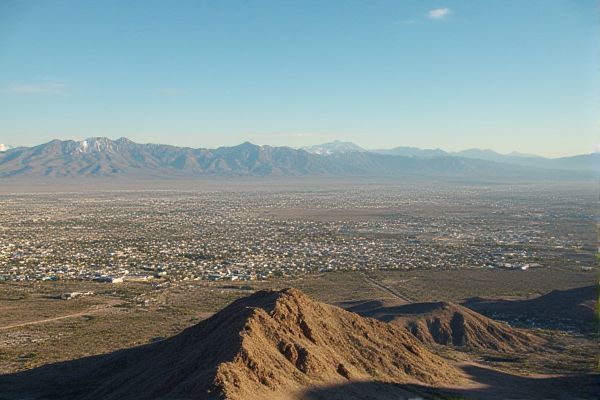
Safety and crime rates in Nevada: Check local crime rate reports. Research specific neighborhood safety statistics. Compare city versus rural crime trends. Understand property crime versus violent crime specifics. Review safety-ranked cities in Nevada. Check local police department resources. Analyze historical crime data trends. Incorporate safety apps and alerts. Community involvement impacts safety. Statewide firearms laws and regulations.
Check local crime rate reports.
The FBI's Crime in the U.S. 2019 report offers comprehensive crime statistics for various cities across Nevada, detailing both violent and property crimes. These statistics are categorized by specific offenses such as murder, rape, robbery, and aggravated assault, alongside property crimes like burglary, larceny-theft, and motor vehicle theft. For those seeking in-depth information, the Nevada Crime Statistics webpage serves as a valuable resource, making it easier for policymakers, law enforcement, and the public to understand and analyze the crime trends for effective planning and action.
Research specific neighborhood safety statistics.
For those interested in understanding crime trends in Nevada, various resources can provide comprehensive insights. One such resource includes a report that offers detailed crime rate statistics across cities in Nevada, highlighting the Safest Cities such as Boulder City which boasts the lowest rates in both property and violent crimes. Additionally, Las Vegas has its own dedicated portal providing a deep dive into crime data through maps and applications that help analyze person and property crimes at a neighborhood level. Furthermore, articles comparing national averages with local crime rates in various Nevada cities give essential perspectives on safety, evaluating both high and low crime incidents across different neighborhoods and cities.
Compare city versus rural crime trends.
In Nevada, city areas such as Las Vegas and Reno report higher rates of violent and property crimes compared to rural areas. For example, Las Vegas had the highest violent crime rate, while Reno had the highest property crime rate. In contrast, rural areas like Elko reported no murders, highlighting the significant disparity between urban and rural crime trends. For a detailed analysis, visit the Center for Democratic Culture for more insights into Nevada's crime statistics.
Understand property crime versus violent crime specifics.
In Nevada, property crimes, such as burglary, larceny-theft, and motor vehicle theft, were significantly more prevalent than violent crimes in 2019, with 71,525 property crimes reported compared to 15,210 violent crimes. These violent crimes include murder, rape, robbery, and aggravated assault. For a detailed breakdown and analysis, you can visit the FBI's Crime in the U.S. report for 2019 to understand the crime statistics in Nevada better.
Review safety-ranked cities in Nevada.
Among the safest cities in Nevada, Boulder City stands out with violent crimes being 84% lower than the national average. Other noteworthy safe cities in the state include Mesquite, Fallon, Caliente, and Henderson. These cities all boast significantly lower crime rates compared to both the national average and other cities in Nevada. For more information on these secure locations, you can visit the Safest Cities in Nevada article on Property Club.
Check local police department resources.
The Las Vegas Metropolitan Police Department offers a comprehensive range of resources to support public safety and transparency in Nevada. On their Online Services page, you can find links for filing crime reports, requesting copies of reports, making appointments, and submitting commendations or complaints. These services are designed to ensure that residents and visitors have convenient access to essential law enforcement support.
Analyze historical crime data trends.
Historical crime data in Nevada shows a general decline in crime rates over the past few decades. For instance, the violent crime rate in Nevada decreased from 697.63 per 100,000 population in 2015 to 541.13 per 100,000 population in 2018, with a notable 3.47% decline from 2017 to 2018. Similarly, property crime rates also declined, from 2674.88 per 100,000 population in 2015 to 2438.22 per 100,000 population in 2018. Detailed information and trends about these statistics can be found on the Macrotrends website, which provides comprehensive insights into various metrics over time.
Incorporate safety apps and alerts.
This resource highlights safety apps and alerts in Nevada, such as the "Stay Alert, Henderson!" system, which delivers real-time emergency notifications for incidents like weather events and hazmat incidents, and the PulsePoint app, which alerts trained citizens to cardiac emergencies in their vicinity. For more detailed information, you can visit the official City of Henderson website.
Community involvement impacts safety.
Community involvement is crucial for safety in Nevada, as high population turnover and low residential stability in urban neighborhoods diminish collective efficacy, leading to a lack of mutual trust, reduced supervision of youth, and weaker community efforts to maintain social order. Cities in Nevada with lower crime rates, such as Moapa Valley, benefit from active community involvement, high quality of life, and effective law enforcement, highlighting the importance of Community Engagement in ensuring public safety.
Statewide firearms laws and regulations.
Nevada's firearms laws are characterized by the absence of state permits for purchasing firearms, no firearm registration, and a "shall issue" policy for concealed carry permits. Open carry is permitted without a permit, and the state has specific regulations such as background checks for purchases, prohibitions on metal-penetrating bullets, and restrictions on fully automatic weapons in line with federal law. To understand more about these regulations and their implications, the Gun Laws In Nevada offer a comprehensive overview. This framework ensures that while firearm ownership is accessible, it is also regulated to uphold safety standards.
